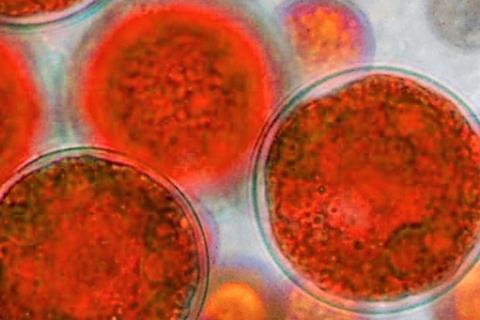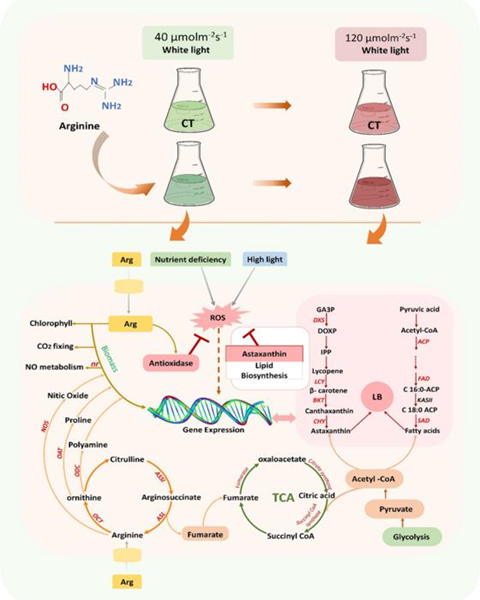Scientists who compared different substances that can help a type of algae called Haematococcus pluvialis (H. pluvialis) grow and produce astaxanthin, a valuable compound, discovered that arginine is one of the most effective and economical additives for this purpose.

The group led by Prof. Huang Qing from Hefei Institutes of Physical Science (HFIPS) of Chinese Academy of Sciences (CAS), has made new advancements in the study of H. pluvialis biomass and astaxanthin. They revealed that arginine supplements can enhance the growth and astaxanthin production of H. pluvialis.
These research findings were published in Biosource Technology.
Antioxidant property
Astaxanthin, a powerful ketocarotenoid, is predominantly known for its strong antioxidant property. It has been applied in food, pharmaceutical, medicinal, and cosmetic industries. H. pluvialis is one of the best natural sources of astaxanthin in nature. Improving astaxanthin production is a key concern of researchers across the world.
“We have been looking for an economic, faster and healthier way for astaxanthin production in H. pluvialis, and this is what we found,” said Prof. Huang,

Through this study, the team found that arginine works by activating specific pathways in the algae, controlling certain genes related to carotenoids and lipids, improving how the algae uses carbon, and increasing the expression of several genes involved in lipid and astaxanthin production. This combination of effects results in better algal growth, higher astaxanthin levels, and increased lipid production.
Key candidate
In this study, the researchers compared different additives that can promote the algal growth and astaxanthin accumulation in H. pluvialis, and found that arginine may be a best candidate in terms of efficiency and economic outcome.
The results provide a significant mechanism and applicability of using exogenous arginine and high-light to stimulate bioproducts from H. pluvialis.







No comments yet